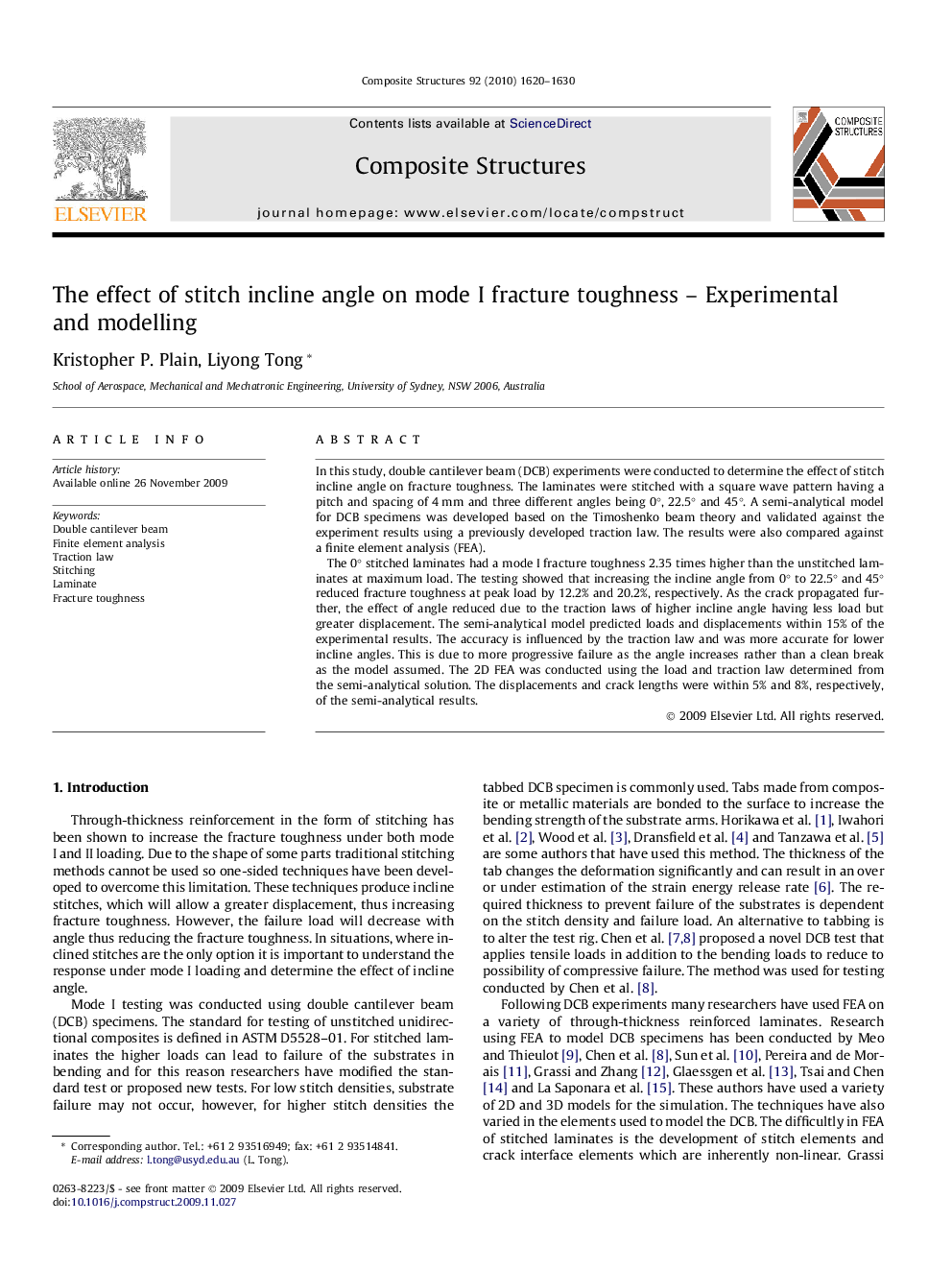| Article ID | Journal | Published Year | Pages | File Type |
|---|---|---|---|---|
| 252693 | Composite Structures | 2010 | 11 Pages |
In this study, double cantilever beam (DCB) experiments were conducted to determine the effect of stitch incline angle on fracture toughness. The laminates were stitched with a square wave pattern having a pitch and spacing of 4 mm and three different angles being 0°, 22.5° and 45°. A semi-analytical model for DCB specimens was developed based on the Timoshenko beam theory and validated against the experiment results using a previously developed traction law. The results were also compared against a finite element analysis (FEA).The 0° stitched laminates had a mode I fracture toughness 2.35 times higher than the unstitched laminates at maximum load. The testing showed that increasing the incline angle from 0° to 22.5° and 45° reduced fracture toughness at peak load by 12.2% and 20.2%, respectively. As the crack propagated further, the effect of angle reduced due to the traction laws of higher incline angle having less load but greater displacement. The semi-analytical model predicted loads and displacements within 15% of the experimental results. The accuracy is influenced by the traction law and was more accurate for lower incline angles. This is due to more progressive failure as the angle increases rather than a clean break as the model assumed. The 2D FEA was conducted using the load and traction law determined from the semi-analytical solution. The displacements and crack lengths were within 5% and 8%, respectively, of the semi-analytical results.
